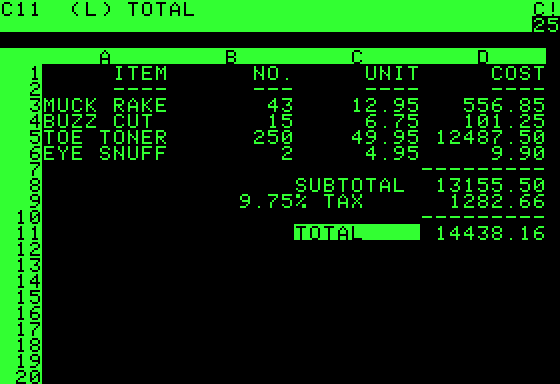|
Pixelization
Pixelization (in British English pixelisation) or mosaic processing is any technique used in editing images or video, whereby an image is blurred by displaying part or all of it at a markedly lower resolution. It is primarily used for censorship. The effect is a standard graphics filter, available in all but the most basic bitmap graphics editors. In media Pixelization has also been used for artistic effect, notably in the art print ''The Wave of the Future'', a reinterpretation of Katsushika Hokusai's '' The Great Wave off Kanagawa''. In this updated print, the image of the large ocean wave shifts from the traditional style of the Japanese woodcut print to a pixelized image and finally to a wireframe model computer graphics image. ''Westworld'' (1973) was the first feature film to use digital image processing to pixelize photography to simulate an android's point of view. The 2010 third-person cover shooter Kane & Lynch 2: Dog Days also used pixelization for artistic purpo ... [...More Info...] [...Related Items...] OR: [Wikipedia] [Google] [Baidu] |
Fogging (censorship)
Fogging, also known as blurring, is used for censorship or privacy. A visual area of a picture or movie is blurred to obscure it from sight. This form of censorship is used for sexually related images/scenes, hiding genitals, pubic hair, buttocks, female nipples/breasts, or sexual activity of any sort. Pixelization is a form of fogging. In Japan Japan is an island country in East Asia. Located in the Pacific Ocean off the northeast coast of the Asia, Asian mainland, it is bordered on the west by the Sea of Japan and extends from the Sea of Okhotsk in the north to the East China Sea ..., where it is called , fogging is employed on most films aired on public television that feature adult content of any kind. This form of editing also appears in television programs where an individual's face may not be shown due to legal or privacy concerns. As it does not contrast with the surrounding image very much, it is arguably preferable over most other forms of censorship. However, u ... [...More Info...] [...Related Items...] OR: [Wikipedia] [Google] [Baidu] |
Tape Delay (broadcasting)
In radio and television, broadcast delay is an intentional delay when broadcasting live material, technically referred to as a deferred live. Such a delay may be to prevent mistakes or unacceptable content from being broadcast. Longer delays lasting several hours can also be introduced so that the material is aired at a later scheduled time (such as the prime time hours) to maximize viewership. Tape delays lasting several hours can also be edited down to remove filler material or to trim a broadcast to the network's desired run time for a broadcast slot, but this is not always the case. Usage A short delay is often used to prevent profanity, bloopers, nudity, or Obscenity, other undesirable material from making it to air. In this instance, it is often referred to as a "seven-second delay" or "profanity delay". Longer delays, however, may also be introduced, often to allow a show to air at the same time for the local market as is sometimes done with nationally broadcast programs i ... [...More Info...] [...Related Items...] OR: [Wikipedia] [Google] [Baidu] |
Westworld (film)
''Westworld'' is a 1973 American science fiction Western film written and directed by Michael Crichton. The film follows guests visiting an interactive amusement park containing lifelike Android (robot), androids that unexpectedly begin to malfunction. The film stars Yul Brynner as an android in the amusement park, with Richard Benjamin and James Brolin as guests of the park. The film was from an original screenplay by Crichton and was his first theatrical film as director, after one TV film. It was also the first feature film to use digital image processing to pixellate photography to simulate an android point of view.A Brief, Early History of Computer Graphics in Film , Larry Yaeger, August 16, 2002 (last update). Retrieved March 24, 2010 Critical reception was largely positive by contemporary and ... [...More Info...] [...Related Items...] OR: [Wikipedia] [Google] [Baidu] |
Censorship
Censorship is the suppression of speech, public communication, or other information. This may be done on the basis that such material is considered objectionable, harmful, sensitive, or "inconvenient". Censorship can be conducted by governments and private institutions. When an individual such as an author or other creator engages in censorship of their own works or speech, it is referred to as ''self-censorship''. General censorship occurs in a variety of different media, including speech, books, music, films, and other arts, Newspaper, the press, radio, television, and the Internet for a variety of claimed reasons including national security, to control obscenity, pornography, and hate speech, to protect children or other vulnerable groups, to promote or restrict political or religious views, and to prevent Defamation, slander and Defamation, libel. Specific rules and regulations regarding censorship vary between Legal Jurisdiction, legal jurisdictions and/or private organiza ... [...More Info...] [...Related Items...] OR: [Wikipedia] [Google] [Baidu] |
Nudity
Nudity is the state of being in which a human is without clothing. While estimates vary, for the first 90,000 years of pre-history, anatomically modern humans were naked, having lost their body hair, living in hospitable climates, and not having developed the Craft, crafts needed to make clothing. As humans became Behavioral modernity, behaviorally modern, body adornments such as jewelry, tattoos, body paint and scarification became part of non-verbal communications, indicating a person's social and individual characteristics. Indigenous peoples in warm climates used clothing for decorative, symbolic or ceremonial purposes but were often nude, having neither the need to protect the body from the elements nor any conception of nakedness being shameful. In many societies, both ancient and contemporary, children might be naked until the beginning of puberty. Women may not cover their breasts due to the association with nursing babies more than with sexuality. In the ancient ... [...More Info...] [...Related Items...] OR: [Wikipedia] [Google] [Baidu] |
MARPAT
MARPAT (short for Marine pattern) is a multi-scale camouflage pattern in use with the United States Marine Corps, designed in 2001 and introduced from late 2002 to early 2005 with the Marine Corps Combat Utility Uniform (MCCUU), which replaced the Camouflage Utility Uniform. Its design and concept are based on the Canadian CADPAT pattern. The pattern is formed of small rectangular pixels of color. In theory, it is a far more effective camouflage than standard uniform patterns because it mimics the dappled textures and rough boundaries found in natural settings. It is also known as the "digital pattern" or "digi-cammies" because of its micropattern (pixels) rather than the old macropattern (big blobs). The United States government has patented MARPAT, including specifics of its manufacture. By regulation, the pattern and items incorporating it, such as the MCCUU and ILBE backpack, are to be supplied by authorized manufacturers only and are not for general commercial sale, alt ... [...More Info...] [...Related Items...] OR: [Wikipedia] [Google] [Baidu] |
Reverse Video
Reverse video (or invert video or inverse video or reverse screen) is a computer display technique whereby the background and text color values are inverted. On older computers, displays were usually designed to display text on a black background by default. For emphasis, the color scheme was swapped to bright background with dark text. Nowadays the two tend to be switched, since most computers today default to white as a background color. The opposite of reverse video is known as ''true video''. Video is usually reversed by inverting the brightness values of the pixels of the involved region of the display. If there are 256 levels of brightness, encoded as 0 to 255, the 255 value becomes 0 and vice versa. A value of 1 becomes 254, 2 of 253, and so on: ''n'' is swapped for ''r'' - ''n'', for ''r'' levels of brightness. This is occasionally called a ones' complement. If the source image is of middle brightness, reverse video can be difficult to see, 127 becomes 128 for example, w ... [...More Info...] [...Related Items...] OR: [Wikipedia] [Google] [Baidu] |
Posterization
Posterization or posterisation of an image is the conversion of a continuous gradation of tone to several regions of fewer tones, causing abrupt changes from one tone to another. This was originally done with photographic processes to create posters. It can now be done photographically or with digital image processing, and may be deliberate or an unintended artifact of color quantization. Posterization is often the first step in vectorization (tracing) of an image. Cause The effect may be created deliberately, or happen accidentally. For artistic effect, most image editing programs provide a posterization feature, or photographic processes may be used. Unwanted posterization, also known as banding, may occur when the color depth, sometimes called bit depth, is insufficient to accurately sample a continuous gradation of color tone. As a result, a continuous gradient appears as a series of discrete steps or bands of color — hence the name. When discussing fixed pixel displ ... [...More Info...] [...Related Items...] OR: [Wikipedia] [Google] [Baidu] |
Colour Banding
Colour banding is a subtle form of posterization in digital images, caused by the colour of each pixel being rounded to the nearest of the digital colour levels. While posterization is often done for artistic effect, colour banding is an undesired artifact. In 24-bit colour modes, 8 bits per channel is usually considered sufficient to render images in Rec. 709 or sRGB. However the eye can see the difference between the colour levels, especially when there is a sharp border between two large areas of adjacent colour levels. This will happen with gradual gradients (like sunsets, dawns or clear blue skies), and also when blurring an image a large amount. Colour banding is more noticeable with fewer bits per pixel (BPP) at 16–256 colours (4–8 BPP), where there are fewer shades with a larger difference between them. Possible solutions include the introduction of dithering and increasing the number of bits per colour channel. Because the banding comes from lim ... [...More Info...] [...Related Items...] OR: [Wikipedia] [Google] [Baidu] |
Bleep Censor
A bleep censor is the replacement of profanity and classified information with a beep (sound), beep sound (usually a ), used in public television, radio and social media. History Bleeping has been used as a standard since 1998 as a means of Censorship, censoring TV and radio programs to remove content not deemed suitable for "family", "daytime", "broadcasting", or "international" viewing, as well as sensitive classified information for security. The bleep censor is a software module, manually operated by a broadcast technician. A bleep is sometimes accompanied by a digital blur pixelization or box over the speaker's mouth in cases where the removed speech may still be easily understood by lip reading. In closed captioning, subtitles, bleeped words are usually represented by "[bleep]". Sometimes the phrases "[expletive]", "[beep]", "[censored]", and "[explicit]" are used, while it is also common (though less so) to see hyphens (e.g. abbreviations of the word "fuck" like ''f—k'' ' ... [...More Info...] [...Related Items...] OR: [Wikipedia] [Google] [Baidu] |
Censorship In Thailand
Censorship in Thailand involves the strict control of political news under successive governments, including by harassment and manipulation. Freedom of speech was guaranteed in 1997"The Thai Constitution of 1997 and its Implication on Criminal Justice Reform" Kittipong Kittayarak, ''120th International Senior Seminar'', Resource Material Series No. 60, United Nations Asia and Far East Institute (UNAFEI). Retrieved 23 August 2012 and those guarantees continue in . [...More Info...] [...Related Items...] OR: [Wikipedia] [Google] [Baidu] |
Eroge
An ''eroge'' (, ''eroge'', or , ''erogē'', ), also called an H-game, is a Japanese genre of erotic video game. The term encompasses a wide variety of Japanese games containing erotic content across multiple genres. The first ''eroge'' were created in the 1980s, and many well-known companies in the Japanese gaming industry originally produced and distributed them. Some ''eroge'' are primarily focused on erotic content, while others, such as Key (company), Key's ''Kanon (video game), Kanon'', only contain occasional scenes in an otherwise non-erotic work. Games in the latter category are often re-released with sexual content removed for general audiences. Throughout its history, the genre has faced controversy for its use of explicit sexual content, and as a result has been banned from several console platforms. Etymology ''Eroge'' is a portmanteau of . Such games are also referred to as an . History ''Eroge'' is a Japanese erotic video game. The earliest known commercial ero ... [...More Info...] [...Related Items...] OR: [Wikipedia] [Google] [Baidu] |








